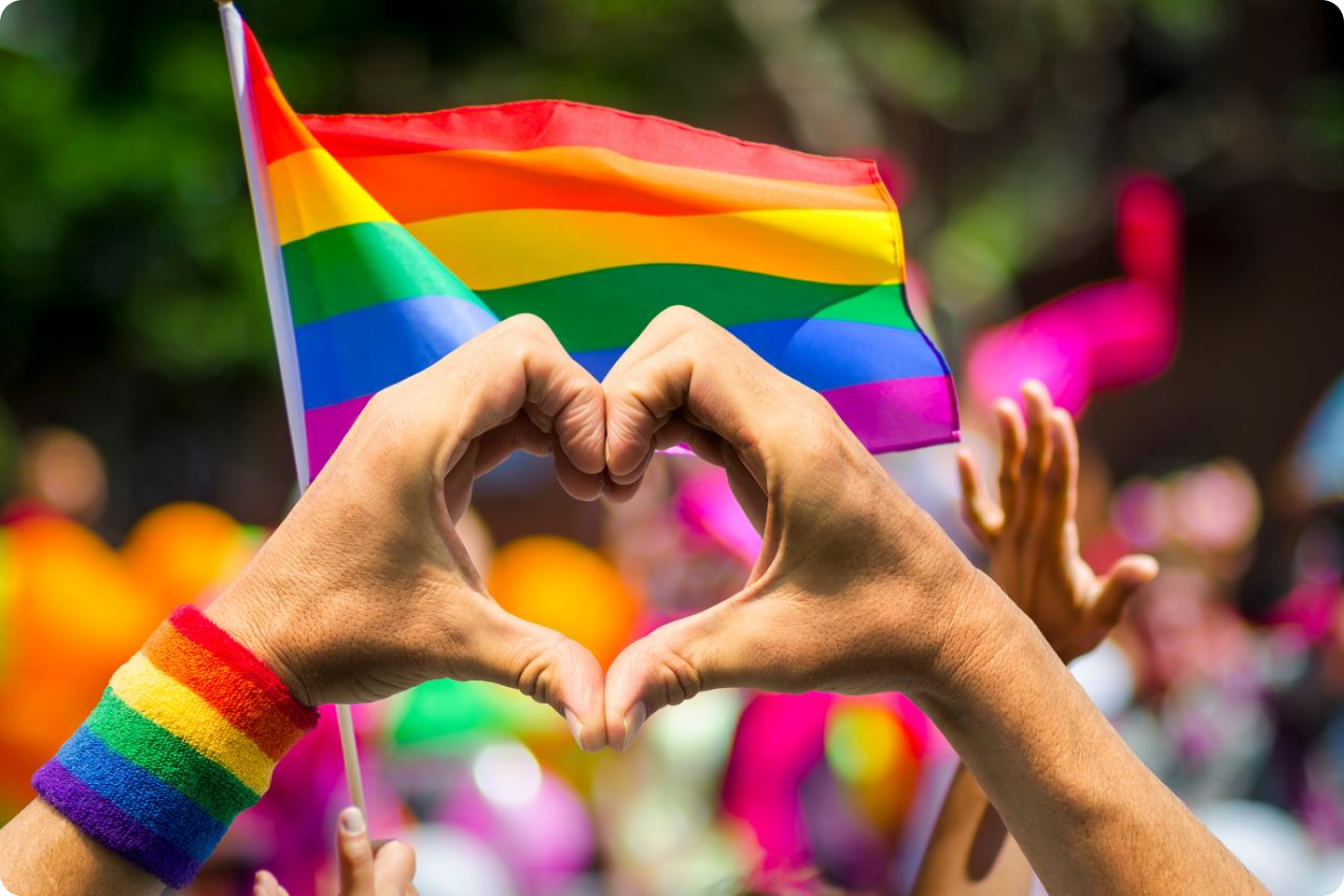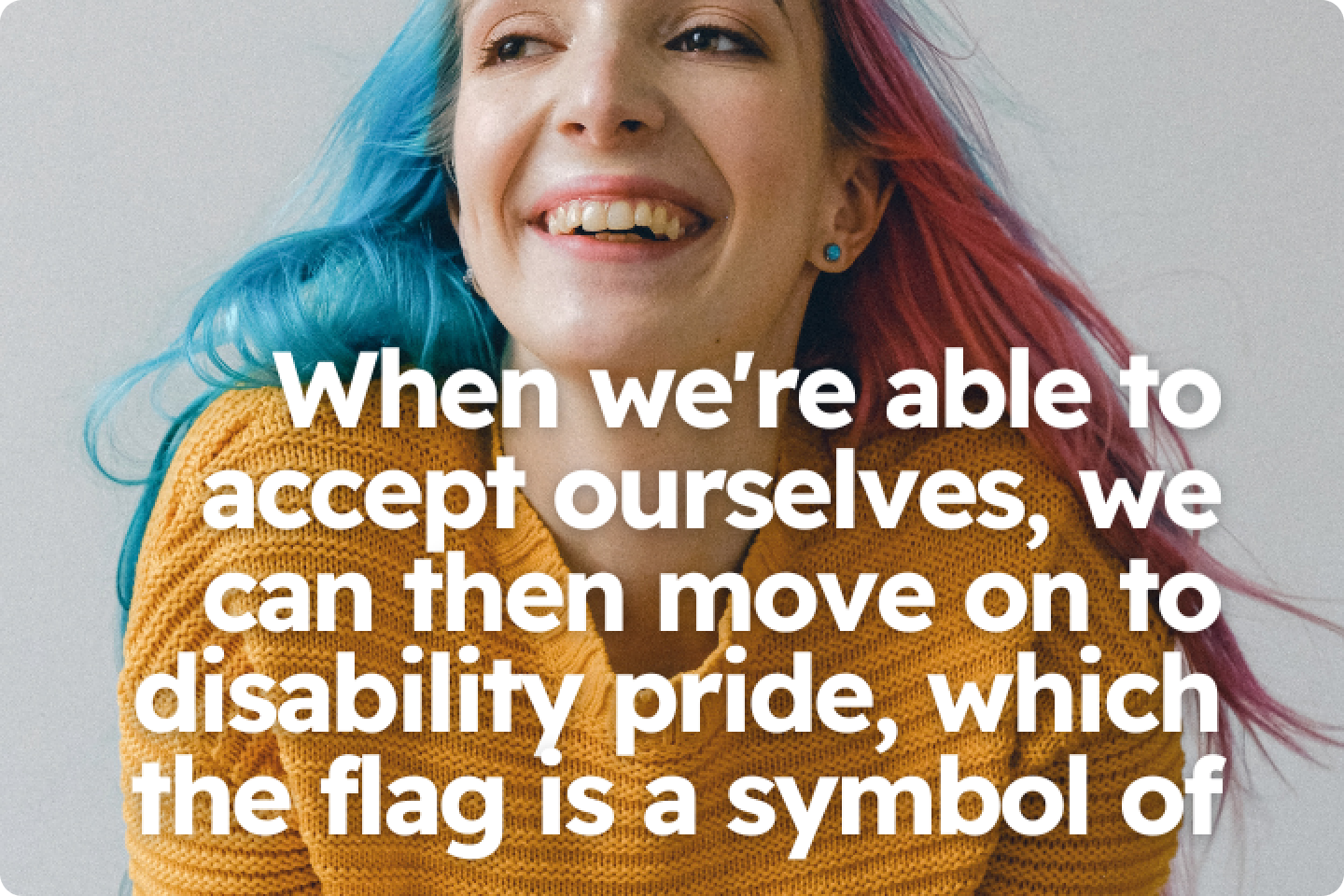All Articles
3 min read
Celebrating Disability Pride Month
Written by
Purpl
Published on
July 13, 2024

One day in July 1990, in Boston, USA, Disability Pride was born, following the passing of the Americans with Disabilities Act in the US. The Act gave disabled people the right to be treated equally and fairly, without discrimination. According to a newspaper clipping from the time, the event celebrated that “far from tragic, disability is a natural part of the human experience”. Over time, this event has become a month-long event every July and an international movement for the disabled community to celebrate their identity, culture, and impact on society.
Disability Pride Month is an opportunity for the community to raise awareness of the challenges disabled people face every day and to encourage the non-disabled community to consider how they perceive disability – working towards the end of ‘ableism and social stigma’
The Origins of Disability Pride
Born out of the Disability Rights movement, Disability Pride aims to reshape the history of negativity and stigma surrounding disability and disabled people. Disability Pride celebrates the history of the movement, and how the amazing members of the disabled community can, and do, positively contribute to society. The events give disabled people the chance to unite and celebrate their pride in who they are, and what they’ve achieved.

Disability Pride in the UK
The first Disability Pride Parade in the UK was held in Belfast in 2014, and Brighton followed as the first place in England to hold one in 2017. Now, events are held locally around the country in July, providing a chance for people with disabilities to come together and celebrate being themselves, no matter their differences.
This Year’s Theme
The theme for this year’s Disability Pride is ‘I want a life like yours’, from the Arc’s National Council of Self-Advocates, and reflects the desire for disabled people to have access to life experiences that they are often denied. Non-disabled people can also become involved in Disability Pride by becoming an ally and learning about the disabled community. Following, and engaging with, disability activists on social media supports them in fighting for visibility, social acceptance, changes in policy, and more effective accessibility. Listening as disabled people talk about their experiences, finding out about the issues that affect them, and talking to non-disabled people about the challenges, and achievements, disabled people face every day, are all positive ways to show support.
Challenges Faced by the Disabled Community
According to Scope, there are 16 million disabled people in the UK, with 5 million of them in employment (an employment rate of 53% compared to 82% for non-disabled people). The average household with disabled people faces an average extra £1000 per month in additional costs due to living with their disability. This was the main reason why Purpl was created to help the disabled community offset those costs through discounts on everyday products and services.
The percentage of working-age non-disabled people in poverty is 19%, while for working-age disabled people, this figure rises to 27%. These statistics highlight some of the challenges faced by the disabled community and underscores why Disability Pride remains both relevant and crucial in our society.
The Disability Pride Flag
The Disability Pride flag represents different aspects of disability. A new design was unveiled in October 2021 by Ann Magill, it features a straight diagonal banner of five colours on a dark background. The redesign was inspired by requests from the disabled community to demonstrate more inclusivity by highlighting all diversities of disabilities.

The five colours represent:
- Red: Physical disabilities
- Gold: Neurodiversity
- White: Non-physical and undiagnosed disabilities
- Blue: Emotional and psychiatric disabilities
- Green: Sensory disabilities
The charcoal background commemorates and mourns disabled people who’ve died due to ableism, violence, negligence, suicide, rebellion, illness, and eugenics. It also represents rage and protest against the mistreatment of the disabled community.
Understanding Ableism
Ableism is when people are characterised and defined by their disabilities, creating social prejudices and discrimination within society. By actively celebrating Disability Pride Month, the disabled community has the chance to change the conversation around disability and shift perceptions of their living experiences. It’s important that we don’t hide away from our disabilities, by doing so we are contributing to the mistreatment of the disabled community.
Embracing Disability Pride
“It’s crucial to let others with disabilities know that they can be proud of who they are,” Jordan LeVan, founder of The Apraxia Foundation. “When we’re able to accept ourselves, we can then move on to disability pride, which the flag is a symbol of.”

Disability Pride Month is a time for disabled people to unite, celebrate their pride in who they are, and what they’ve achieved, while also educating and inspiring the broader community to be more inclusive and to have respect for everyone regardless of their disabilities.
Related Articles
A Mission for Inclusivity and Empowerment
WeDeserveBetter: A Movement for Accessibility and Inclusion
Purple Sock Day: Empowering The Disabled Community One Step At A Time
